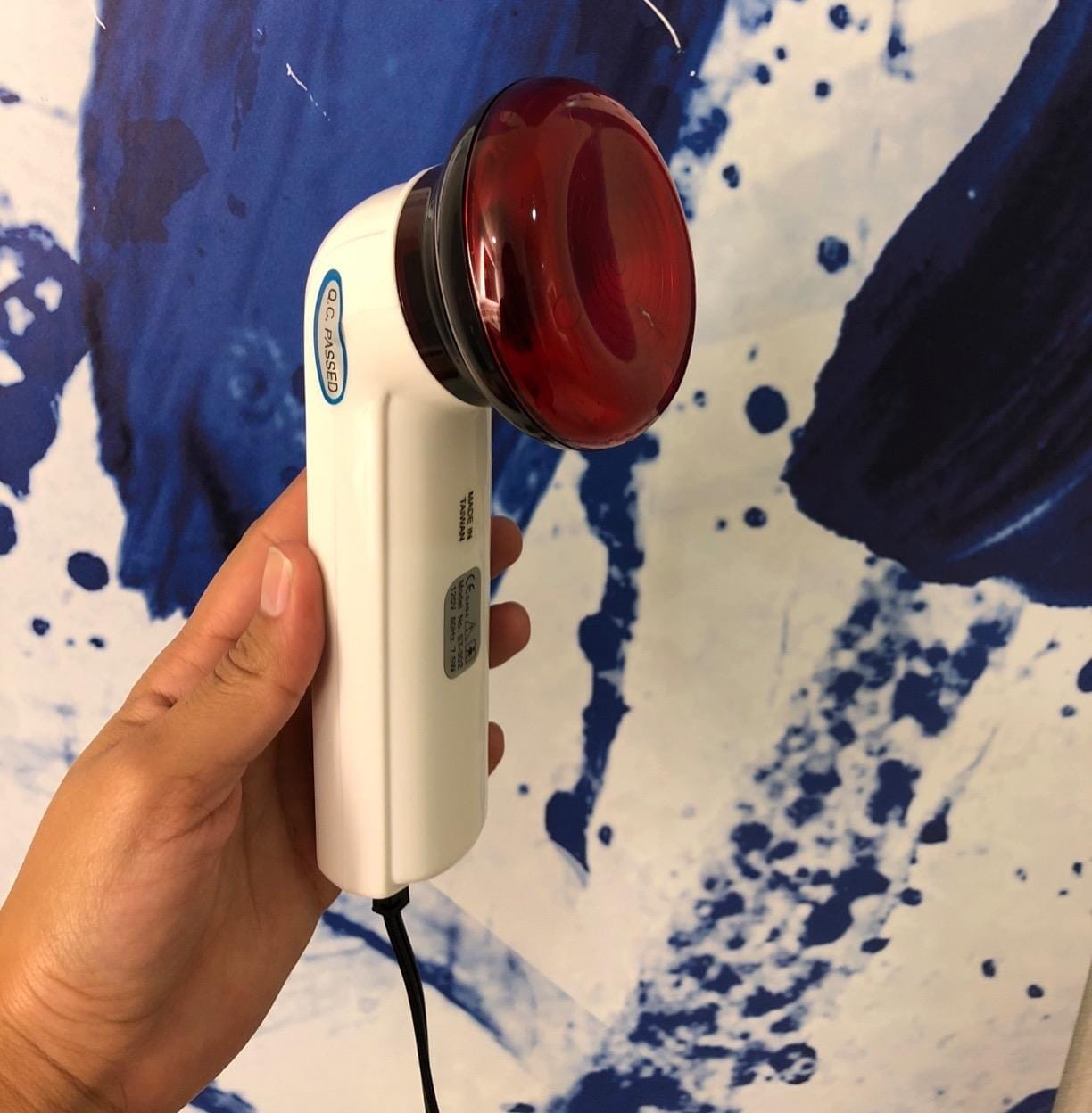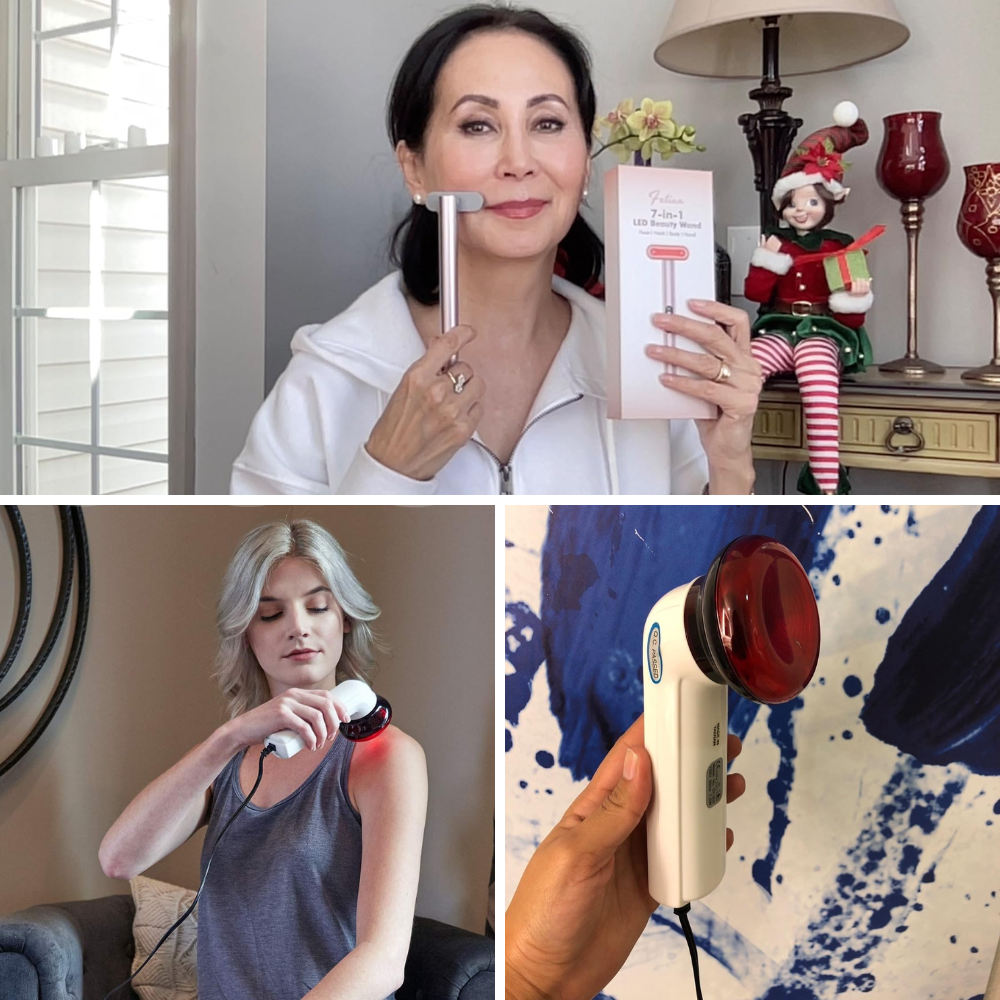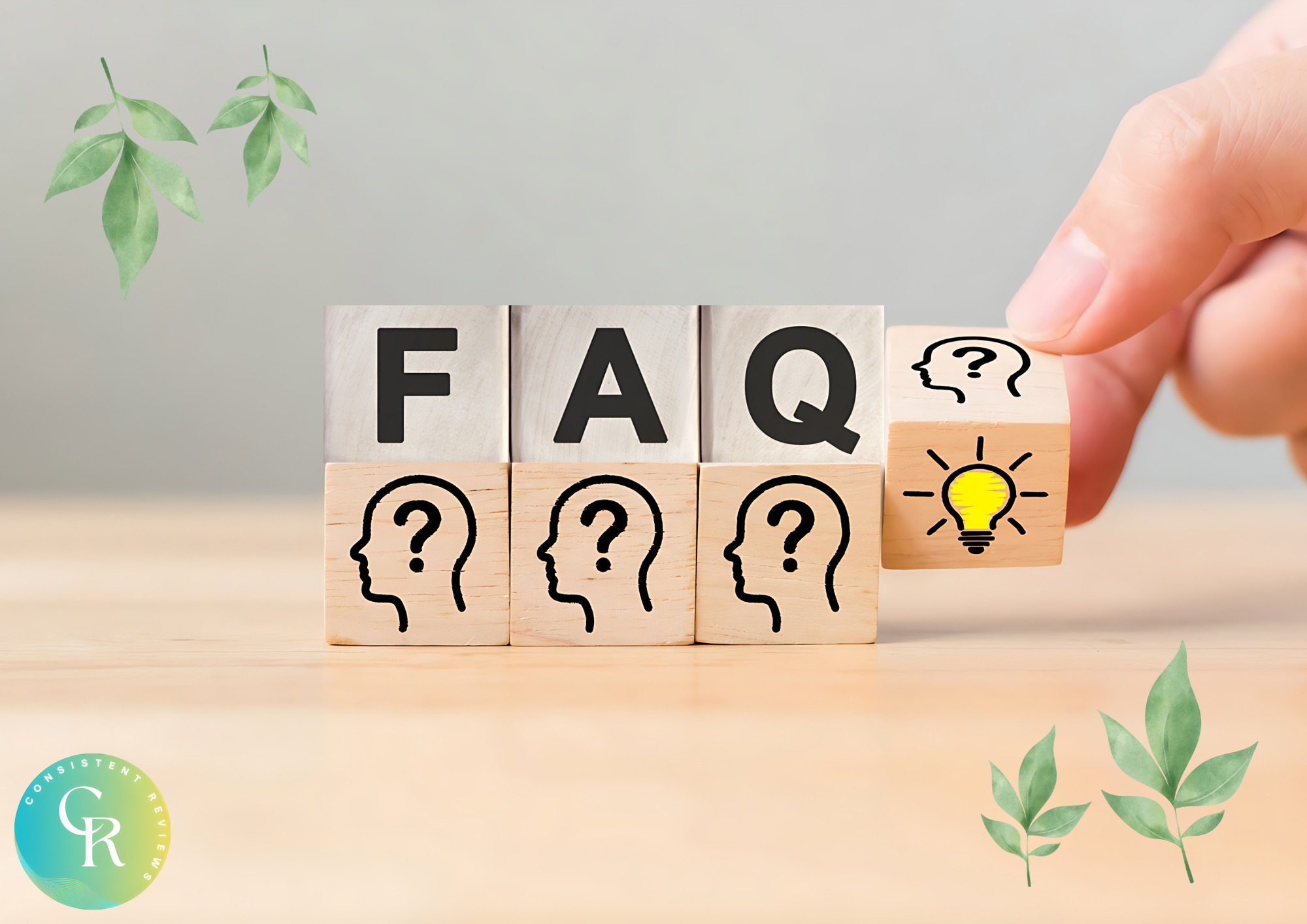Key Takeaways:
- Safety Profile: Red light therapy is generally considered safe when used appropriately under professional guidance or with correctly specified at-home devices.
- Potential Benefits: It offers multiple health benefits including improved skin health, enhanced wound healing, and pain relief.
- Considerations and Risks: While safe for most, certain conditions and skin types require special consideration to avoid adverse effects.
Introduction to Red Light Therapy

Red light therapy, also known as low-level laser therapy or photobiomodulation, involves the use of low-power laser therapy or light-emitting diodes (LEDs) to emit specific wavelengths of light. This therapy is utilized to treat a variety of conditions, from skin health enhancement to pain relief. The core mechanism behind how red light therapy works is its ability to stimulate cellular function and promote healing.
Understanding the Technology Behind Red Light Therapy
Red light therapy devices emit visible light in red or near-infrared spectrums, which is absorbed by the skin tissue. This absorption stimulates collagen production, aids in cell growth, and enhances blood circulation, all of which are crucial for tissue repair and health restoration. The specific light wavelengths used are key to achieving the desired therapeutic effects.
Safety Profile of Red Light Therapy
When discussing whether is red light therapy safe, it's important to note that it is generally safe. The treatment uses low-level light therapy, which does not have the same risks as stronger laser therapies used in laser surgery. The non-invasive nature and the absence of UV light in red light therapy make it a safer option for regular use.
Benefits of Red Light Therapy
The benefits of red light therapy are vast. It has been shown to effectively treat skin conditions like dull skin and aging skin, promote hair growth, and assist in wound healing. Additionally, it can relieve pain from conditions such as carpal tunnel syndrome and reduce inflammation in various parts of the body.
Red Light Therapy for Skin Rejuvenation
One of the most popular uses of red light therapy is for skin rejuvenation. It helps in improving skin quality by boosting collagen production, reducing wrinkles, and treating severe acne. Regular sessions under the guidance of a board-certified dermatologist can lead to noticeable improvements in skin health.
Use in Medical Treatments
Beyond aesthetic applications, red light therapy is also used in medical settings. It has been incorporated into cancer treatments to manage side effects like oral mucositis in cancer patients and is being explored as a treatment for brain disorders and mental health conditions like seasonal affective disorder.
Red Light Therapy and Hair Loss Solutions
Red light therapy is gaining traction as a non-invasive option to combat hair loss, a concern that plagues many. Utilizing a red light therapy device, which emits specific wavelengths of light, stimulates the scalp's follicles to enhance blood flow and cellular rejuvenation. This process, often referred to as photobiomodulation, encourages hair growth by increasing the delivery of nutrients and oxygen to the hair roots, potentially reversing the effects of thinning hair.
The effectiveness of red light therapy in treating hair loss generally depends on consistent and correct usage. Devices designed for home use make the treatment accessible, but consulting with a healthcare provider can optimize results. Comparisons between at-home devices and in-office treatments reveal that while both are beneficial, professional settings might offer more powerful devices and tailored treatment plans. This dual approach ensures that individuals can maintain treatment continuity and efficacy, fostering better outcomes.
Red Light Therapy for Acne Treatment
Red light therapy's effectiveness in treating acne is gaining traction among dermatologists and skincare enthusiasts alike. This therapy utilizes specific wavelengths of light emitted by LEDs to reduce inflammation and promote healing. Unlike traditional acne treatments that may involve harsh chemicals or medications, red light therapy offers a gentler alternative. Targeting the underlying inflammation helps to clear up skin without the side effects associated with topical or oral acne treatments.
The success of red light therapy in treating acne hinges on its ability to penetrate the skin and affect sebum production, which is often a contributing factor in acne outbreaks. Studies suggest that consistent red light exposure can significantly improve skin complexion by reducing acne lesions and preventing future breakouts. This makes it an appealing option for those who have struggled with other acne treatments. Both at-home devices and in-office treatments by a dermatologist can provide this form of therapy, allowing for flexibility in the management and maintenance of acne-prone skin.
Red Light Therapy for Enhancing Cognitive Function
Red light therapy's potential extends beyond skin and pain management to possibly enhance cognitive function. Studies suggest that near-infrared light, a component of red light therapy, can improve mitochondrial function in brain cells, potentially leading to improved energy metabolism and cognitive performance. This therapy, often administered using light-emitting diodes, targets the brain's frontal cortex. By stimulating cellular activity, red light therapy could help mitigate symptoms of cognitive decline associated with conditions like Alzheimer's disease.
The effectiveness of red light therapy in this innovative application is still being explored. Preliminary research indicates that consistent exposure to near-infrared light could enhance memory and attention in older adults. These findings open up exciting possibilities for non-invasive treatment options in neurology. As research progresses, red light therapy could become a staple in cognitive rehabilitation practices, offering a beam of hope for those grappling with cognitive impairments.
Red Light Therapy for Mood Enhancement
Red light therapy's potential to improve mood and mental health is gaining traction among wellness enthusiasts. Studies suggest that exposure to red light can increase serotonin levels, often referred to as the happiness hormone, which plays a crucial role in stabilizing mood. This form of therapy, utilizing light-emitting diodes (LEDs), targets the biochemical processes in the brain, potentially alleviating symptoms of depression and seasonal affective disorder (SAD). The non-invasive nature of red light therapy makes it an appealing option for those looking to enhance their mental well-being without pharmaceuticals.
The effectiveness of red light therapy in mood enhancement largely depends on consistent and correct usage. At-home devices offer the convenience of self-administered treatment, allowing individuals to integrate this therapy into their daily routine seamlessly. However, for those new to this treatment, initial sessions at a dermatologist's office or a specialized clinic might provide insights into the optimal exposure and techniques. As with any therapeutic approach, personal experiences with red light therapy vary, and what works for one might not work for another, underscoring the importance of personalized treatment plans.
Red Light Therapy for Enhancing Sleep Quality
Red light therapy's effectiveness often hinges on its application, and its use in improving sleep quality is gaining traction. By emitting wavelengths that don't disrupt melatonin production, red light devices can help regulate circadian rhythms, thus promoting better sleep patterns. Studies suggest that exposure to red light before bedtime can decrease sleep latency and increase sleep consistency, offering a non-invasive method to enhance overall sleep quality.
Furthermore, the distinction between using red light therapy in a dermatologist's office and employing at-home devices for sleep improvement is noteworthy. While in-office treatments might provide a more controlled environment, at-home devices offer the convenience and flexibility to integrate this therapy into daily routines. This accessibility allows individuals to consistently utilize the therapy, which is crucial for long-term benefits related to sleep enhancement.
Red Light Therapy for Seasonal Affective Disorder (SAD)
Red light therapy is gaining traction as a potential treatment for Seasonal Affective Disorder (SAD), a type of depression related to changes in seasons. Studies suggest that red light can influence neurotransmitter activity, which may improve mood and alleviate depressive symptoms. This form of therapy, often administered in a dermatologist's office, provides a controlled environment where light intensity and exposure duration are optimized for therapeutic effect.
At-home devices are also becoming popular for managing SAD, offering convenience and privacy. These devices are designed with safety and efficacy in mind, allowing individuals to maintain consistent treatment sessions. As with any therapeutic tool, it's crucial to consult healthcare professionals to tailor the treatment to individual needs and ensure it complements other management strategies effectively.
Red Light Therapy and Enhanced Muscle Recovery
Athletes and fitness enthusiasts are turning to red light therapy to enhance muscle recovery after intense physical activity. The therapy is believed to reduce inflammation and increase blood circulation, which are key components in muscle repair and growth. This treatment is often available in sports clinics and wellness centers, where professionals use in-office treatment protocols to ensure optimal recovery.
For those who prefer the comfort of their own space, at-home devices offer a flexible alternative. These devices allow for regular sessions that can be easily incorporated into daily routines, potentially speeding up recovery times and improving overall athletic performance. However, it's important to choose devices that meet safety standards and to follow guidelines to avoid overexposure.
Red Light Therapy for Wound Healing and Tissue Repair
Does red light therapy work for accelerating wound healing? The answer lies in its ability to stimulate cellular activity and increase circulation. When red light wavelengths penetrate the skin, they can enhance the energy production within cells, thereby speeding up the healing process. This method is particularly beneficial for chronic wounds and post-surgical recovery, making it a valuable tool in medical settings.
The efficacy of red light therapy depends significantly on the technology used, specifically the light-emitting diode (LED) settings. In-office treatments typically use high-grade LED devices that ensure deep penetration and optimal wavelength delivery, crucial for effective tissue repair. Conversely, at-home devices, while more accessible, may vary in their effectiveness and should be selected carefully to ensure they meet therapeutic standards.
Red Light Therapy for Athletic Recovery
Athletes are constantly on the lookout for advanced methods to speed up recovery and enhance performance, and red light therapy is stepping up to the plate. This therapy, through its deep penetrating light emitted by diodes, is known to reduce inflammation and muscle soreness after intense physical activity. By enhancing mitochondrial function in cells, red light therapy facilitates quicker regeneration and repair of muscle tissues. This mechanism not only helps in reducing downtime due to injuries but also improves overall athletic performance.
The integration of red light therapy into sports medicine highlights its versatility and effectiveness. Many professional sports teams now include red light treatment as a core component of their recovery protocols. Both in-office treatments and portable at-home devices are utilized, depending on the specific needs and schedules of the athletes. This personalized approach ensures that each athlete receives the optimal benefit from red light therapy, tailored to their recovery needs and performance goals. As this therapy continues to evolve, its adoption in sports settings is likely to expand, offering athletes a competitive edge in their respective fields.
Red Light Therapy in Veterinary Medicine
Red light therapy is not just for humans; it's making waves in veterinary medicine as well. Veterinarians are increasingly turning to this technology to treat a variety of ailments in pets, including inflammation, wound healing, and muscle pain. Using devices equipped with light-emitting diodes, this form of treatment, also known as cold laser therapy, provides a non-invasive option to traditional treatments. Pets suffering from conditions like arthritis or neuropathy can receive red light therapy either in a veterinarian's office or at home with portable devices.
The choice between in-office treatment and at-home devices for pets depends on the specific needs of the animal and the severity of the condition. In-office treatments are typically more intense and can be closely monitored by professionals, ensuring optimal settings and results. Meanwhile, at-home devices offer convenience and comfort for pets, allowing for regular treatments without the stress of frequent vet visits. As with human applications, the safety and efficacy of red light therapy in animals continue to be supported by emerging scientific evidence.
Red Light Therapy and Cold Sores
Cold sores, caused by the herpes simplex virus, can be both painful and embarrassing for those affected. Red light therapy is emerging as a promising tool in the battle against this common issue. The therapy's ability to enhance cellular function and promote healing can shorten the lifespan of cold sores. By applying near-infrared light directly to the affected area, red light therapy helps to reduce the swelling and redness associated with outbreaks, providing relief to sufferers.
Moreover, the use of LED light therapy for cold sores supports the body's natural healing processes without the need for medication. This is particularly beneficial for individuals looking for non-pharmacological options. Regular sessions using at-home devices or occasional visits to a dermatologist's office for more intense red light treatments can make a significant difference in recovery times and symptom management. This approach not only soothes the current outbreak but also aids in the prevention of future occurrences, offering a proactive solution to those prone to herpes simplex virus outbreaks.
Red Light Therapy as an Adjunct in Cancer Care
Exploring the role of red light therapy in cancer care, particularly in managing the side effects of traditional treatments, opens new avenues for patient care. Red light therapy, known for its ability to promote healing and reduce inflammation, is being studied for its potential to alleviate pain and improve the quality of life in cancer patients. This therapy, involving light-emitting diodes (LEDs) or soft laser therapy, is considered a form of photodynamic therapy, which is already used to treat certain types of cancer by activating photosensitizing agents that target cancer cells.
Moreover, the integration of red light therapy into cancer treatment plans is being researched for its efficacy in enhancing the effects of other treatments. For instance, it might improve the skin's response to radiation therapy or reduce the occurrence of oral mucositis, a common complication in patients undergoing chemotherapy. As this therapeutic area evolves, the potential for red light therapy to serve as a supportive treatment in oncology warrants further investigation, with ongoing clinical trials and studies aiming to define its full spectrum of benefits.
Red Light Therapy in Pain Management
Another significant application of red light therapy is in pain management. It has been shown to effectively reduce symptoms of chronic conditions such as connective tissue pains and inflammation, making it a valuable tool in holistic pain management strategies.
Considerations for Darker Skin Tones
While red light therapy is safe for most skin types, individuals with darker skin tones should proceed with caution. There is a potential for hyperpigmentation or other skin concerns due to the varying absorption rates of light energy. Consulting with a healthcare provider can help tailor the treatment to individual needs and skin types.
The Role of At-Home Devices
The market for at-home devices for red light therapy has grown significantly. These devices offer the convenience of personal use but come with the responsibility of ensuring they are used correctly. Users should follow manufacturer guidelines closely to avoid overexposure and potential skin damage.


Q1: Can red light therapy cause cancer?
A1: There is no evidence to suggest that red light therapy causes cancer. It uses light wavelengths that do not include harmful UV radiation, which is associated with an increased risk of skin cancer.
Q2: How often can I safely use red light therapy at home?
A2: It is generally recommended to follow the manufacturer's guidelines for at-home devices, which typically suggest usage for a few minutes per day, several times a week. Overuse can lead to diminished results or skin irritation.
Q3: Is red light therapy suitable for all ages?
A3: Red light therapy is suitable for adults of all ages. However, for children and teenagers, it is crucial to consult a healthcare provider before beginning treatment to ensure it is appropriate for their specific health needs and conditions.

Red light therapy emerges as a generally safe and effective treatment option for a variety of conditions, from enhancing skin health to relieving chronic pain. While it offers numerous benefits, proper usage, especially in terms of exposure and device handling, is crucial to ensure safety. As with any treatment, consultation with a healthcare provider is recommended to tailor the therapy to individual needs and conditions.










